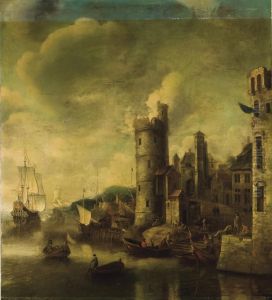Johannes Beerstraten Paintings
Johannes Beerstraten was a Dutch Golden Age painter, known primarily for his marine scenes and cityscapes. Born in Amsterdam in 1622, Beerstraten lived and worked in an era when the Dutch Republic was at the height of its power and cultural influence, often referred to as the Dutch Golden Age. His works reflect the period's fascination with the sea, which was integral to Dutch identity and prosperity, as well as the urban expansion and architectural grandeur of the time.
Beerstraten was a part of the vibrant artistic community in Amsterdam, which included numerous painters who specialized in particular genres. He was the son of the painter Jan Abrahamsz Beerstraaten, who may have been his first teacher. Johannes focused on maritime paintings, including naval battles, shipwrecks, and views of harbors, which catered to the tastes of merchants and seafarers who were eager to see their livelihoods and adventures depicted in art. He also painted winter landscapes and cityscapes, capturing the architectural landmarks of Amsterdam and other Dutch cities with a keen eye for detail and atmosphere.
Despite the high quality of his work, Johannes Beerstraten did not achieve the same level of fame as some of his contemporaries, such as Rembrandt or Vermeer. However, his paintings were still sought after in his time, and today they are valued for their historical representation of 17th-century Dutch life. His cityscapes are particularly noted for their accuracy; they often serve as valuable records of the architecture and urban layout of the period. Beerstraten's attention to the interplay of light and shadow, as well as his skillful depiction of water and reflections, are hallmarks of his work.
Johannes Beerstraten passed away in 1666, leaving behind a body of work that continues to be appreciated for its contribution to the Dutch maritime and cityscape genre. His paintings can be found in various museums and collections around the world, offering a window into the Dutch Golden Age and the maritime culture that was so central to it.
